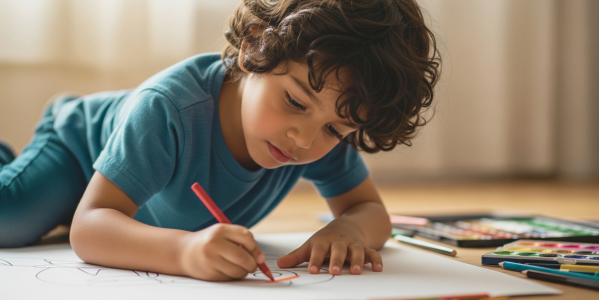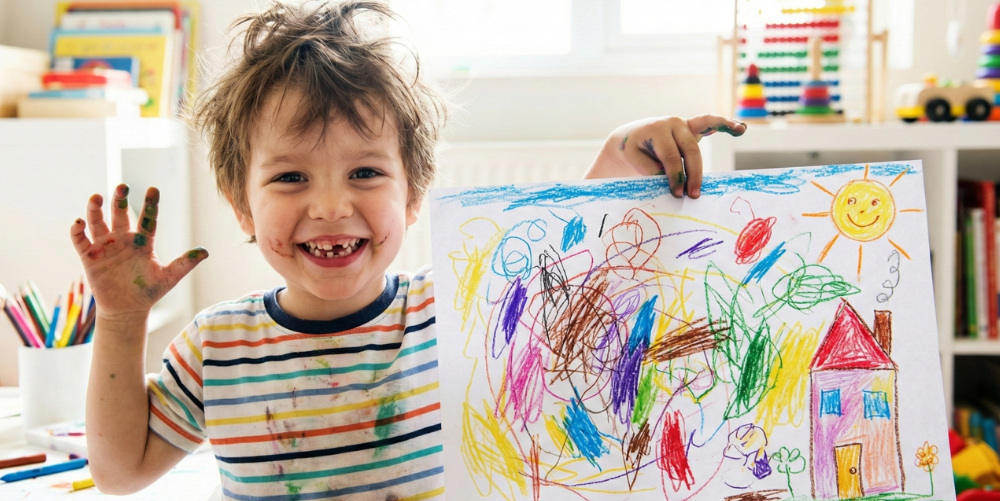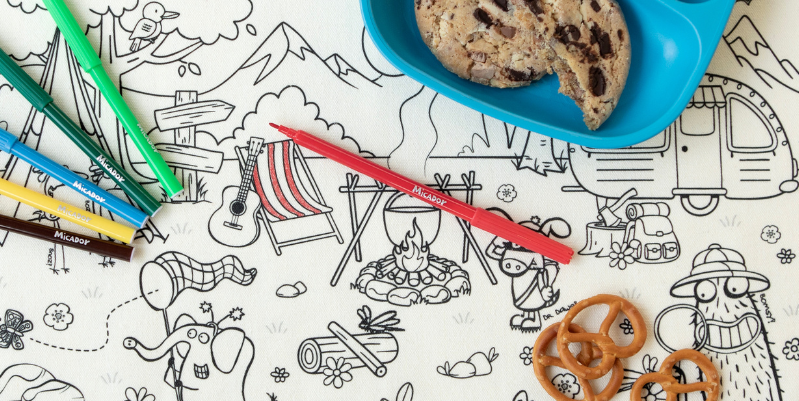Ever wondered why your little one can spend hours mixing paints into delightful (or sometimes not-so-delightful) shades of brown? Turns out, they're not just making a mess – they're building their brain. And honestly, we're here for it.
The Colourful Brain Connection
Look, we probably shouldn't tell you this, but our team spent months obsessing over child development research (and yes, occasionally testing products by seeing which ones our own kids would fight over the least). What we discovered was pretty fascinating.
When children explore colours through art, they're actually firing up multiple areas of their developing brains simultaneously. It's like a neural party, and everyone's invited.
Here's what's actually happening up there:
Visual processing gets a serious workout as kids distinguish between different hues
Language centres activate as they learn to name and describe colours (even if that description is just "the yucky green one")
Memory systems strengthen as they recall which colours mix to make new ones
Emotional regulation develops as they express feelings through colour choices
As Dr. Maria Montessori (who knew a thing or two about kids) once said, "The hands are the instruments of man's intelligence." Add some colour to those hands, and you've basically got a brain-building superpower.
From Scribbles to Neural Pathways
Remember the first time your kid handed you a drawing that was supposedly a portrait of you, but looked more like a hurricane had a fight with a box of markers? That masterpiece was actually building crucial neural connections.

Scientists have found that children who regularly engage in art activities show enhanced development in:
Fine motor skills (crucial for everything from writing to tying shoelaces)
Visual-spatial awareness (helpful for math concepts later)
Executive functioning (the mental processes that help us plan, focus, and juggle tasks)
In our product testing (which sometimes involves watching kids throw things when they don't work right), we've noticed how concentration deepens when children work with colours they're drawn to. It's like their little brains switch into a focused mode that's pretty impressive for someone who can't remember to flush the toilet.
Age-by-Age Colour Development
2-3 Years: The "Everything In Mouth" Stage
At this age, exploring colour is sensory and immediate. Sure, they're still trying to eat half the art supplies, but they're also developing crucial sensory pathways.
Perfect Picks: Our early stART No-Drip Paint is not only washable (you're welcome), but it's also safe, and contains a bitter taste to keep paint-covered fingers out of mouths. The wide, easy-grip containers are designed specifically for tiny hands still figuring out this whole "holding things" business.

3-5 Years: The "Why Is Everything Purple?" Phase
During these preschool years, children begin developing colour preferences and using them to express emotions. If everything your child draws is suddenly purple, they're not just obsessed with dinosaurs – they're exploring colour as language.
Perfect Picks: Micador jR. Washable Mega Oil Pastels are perfect for this age – their mega size is easy to hold, they're washable (again, you're welcome), and they come in colours vivid enough to express ALL the big feelings.
6-8 Years: The Detail Detective Years
Now children begin to notice subtle colour variations and can use them intentionally in their art. They're ready for more nuanced colour exploration and mixing.
Perfect Picks: Micador Stylist Watercolours introduces colour-mixing concepts while being clean enough that your kitchen table won't permanently look like a crime scene.
Practical Ways to Boost Colour Learning
We're not just here to sell you stuff (obvs!). Here are some simple ways to boost colour-based learning at home:
Colour scavenger hunts: "Find three blue things in the kitchen!" (Bonus: keeps them busy while you drink your coffee)
Colour mixing experiments: Let them discover that yellow + blue = green, then watch their minds be blown
Emotion colour charts: Ask them what colour represents different feelings (their answer for "frustrated" might explain the purple crayon marks on your wall...)
Nature colour matching: Take our Micador ColouRush Pencils outside and try to match exactly what you see (impossible, but entertaining)
Colour categorising games: Sorting objects by colour helps with classification skills (and might trick them into tidying up)
The Final Stroke
Art isn't just a way to keep kids busy while you fold laundry (though it's excellent for that too). It's a fundamental building block for brain development that will serve them throughout life.
By providing children with quality art materials and the freedom to explore colour, you're not just supporting their creative development – you're literally helping build better brains.

And that masterpiece currently taking over your refrigerator door? It might just be evidence of neural pathways forming that will help your child solve complex problems later in life. Or it might be a dinosaur. Sometimes it's hard to tell.
Either way, we think that's pretty amazing.
Micador has been sparking creativity and supporting cognitive development through art materials since 1952. Our early stART, Micador jR. and Micador ranges are designed to grow with your child, supporting each developmental stage with age-appropriate tools for exploration. Check out our full range of brain-building, washable, sustainable art supplies at micador.com.au



